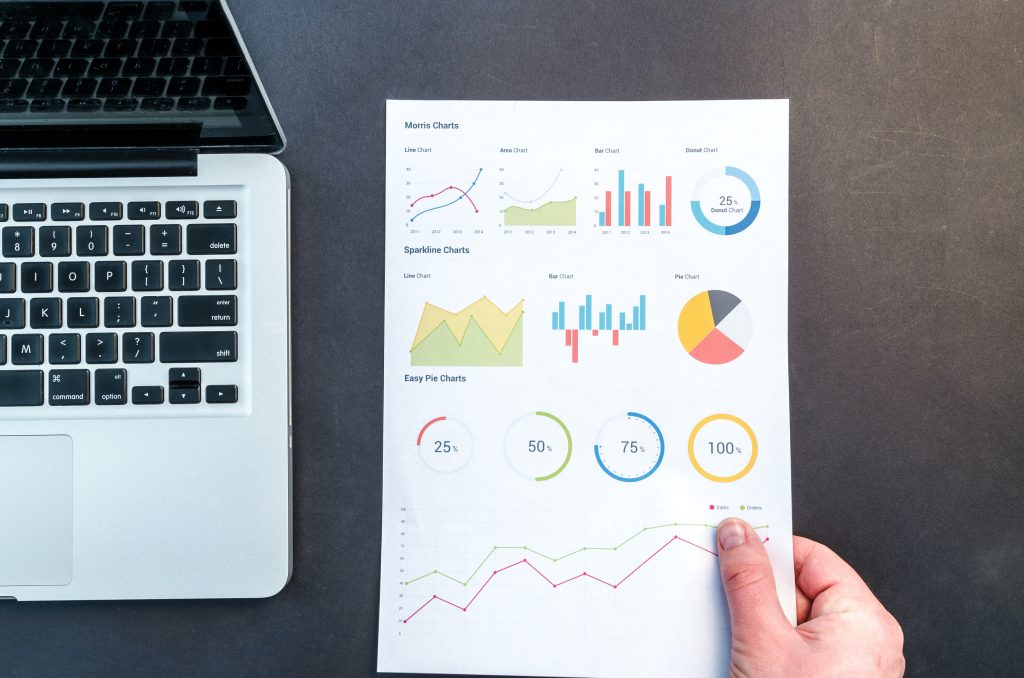Top 7 Social Media Analytics to Track

Social media analytics has become increasingly important to gauge your online presence and content success. What social media metrics should you be tracking?
From engagement rate and follower counts to impressions and click rates, social media metrics can be confusing to analyze, especially if you are new to this approach. You can refer to your social media profiles by viewing your business insights or reporting features available in your social media scheduling platforms to view these metrics.
Want more marketing news? Subscribe to our free newsletter.
What are the social media metrics you should be tracking?
Your social media goals are what determine the metrics you should track. For every goal, you need a related metric, which will help you determine if your social strategy is hitting the mark. Social media metrics prove you can measure how successful a campaign is, how well your social strategy is performing, and ultimately if you will have an impact on your overall business.
Here we uncover the top 7 social media metrics that you’ll want to stay on top of to measure your Key Performance Indicators (KPIs), goal setting, and campaign tracking. We consider these as the basic metrics to start building your social media analytics strategy.
1. Shares
Shares refer to your posts that your followers have reposted to their social media pages. Shares help marketers calculate brand awareness and what content garners attention and shares. Shares take many forms, such as:
- Followers saving your photo or video to their camera roll, then reposting the content on their social media channels.
- Sharing your content to their Instagram and Facebook stories.
- Responding to your content through features like Stitch and Duet on TikTok.
- Copying the post link and sharing it with others through text messaging platforms.
- Sending your content to other users through direct messaging on social media platforms.
2. Click Rate
Also known as click-through rate, this metric calculates the number of clicks your website gets to the amount of profile views your social media page gets. Clicks apply to links you place in your bio, links attached to posts, and links attached to stories.
To get your social media click-through rate, divide the number of clicks your website receives by how many visits your social media profile receives to have a percentage sum. With every algorithmic update, the average click-through rates will change.
Click-through rates also depend on how much engagement you receive in posts and your follower count. The standard click-through rate in the industry is 2-5%. Knowing your average click-through rate is helpful for strategically placing links throughout your social media. Click-through rates also inform you how much of your website traffic comes from social media. Plus, it’s an easy metric to track if you change up or strategy or your page grows.
3. Impressions
Impressions refer to how many times your content appeared organically. You might hear other users refer to this metric as “reach”. However, this metric usually does not inform you whether or not your content appeared on users’ explore pages or in organic searches. Impressions do not include how many times your content was clicked or viewed by users. Impressions are vital for measuring your brand awareness on social media platforms. They can help craft a social media strategy as you can cater your content with specific keywords to increase your chances of showing up in an organic search on a social media platform.
4. Engagement Rate
Engagement rate refers to the number of likes, comments, mentions, and reposts your content receives. Your engagement rate is one of the most important metrics to measure content performance. To view this metric, refer to the business insights on each individual post. Every post will vary in engagement due to content, the time you post, keywords and hashtags used, and the algorithm of other users. It is normal for some posts to perform well while others perform poorly. This metric offers you valuable insight into what content engages your audience, optimal times to post, and other image, keyword and hashtag strategies to employ to ensure a higher engagement rate on your posts.
5. Audience Growth Rate
The audience growth rate will inform you how many new followers your social media page receives within a period. You can set parameters to specify what period you want to focus on. This metric will also show fluctuations in follower count (follows vs. unfollows).
The audience growth rate is essential in seeing what activities garner your page more attention. For example, your social media page may gain more followers during the beginning half of the year versus the middle of the year because you tend to post more in the earlier months. When you piece this metric together with engagement rates, you can begin to form an idea of what content potential followers want to see from you.
The goal is for your audience to grow at a steady rate, with spikes when you collaborate with other creators or launch a new product or service.
6. Traffic to Website
Traffic to a website is a complementary metric to understand your click rate. This metric measures how many followers or visitors to your page clicked on the link in your bio and/or links in posts to your website. Your website should show this metric as traffic originating from your social media. This metric allows you to understand how much of your online traffic and audience stems from social media so you can report on what is working well and what is not so well to make improvements.
7. Top Posts
Top posts are one of the most helpful social media metrics you can use for building your online engagement and attracting new followers. Top posts are simply your top-performing posts in terms of engagement rates (for example, most liked posts, posts with the most comments, etc.)
Other top-performing post indicators include the like and comment ratio to your other content, the number of shares a post receives, and how many reposts it receives. The attention to top-performing posts informs you what content your audience especially enjoyed or resonated with, which can help you create future successful content.
These are the seven most important social metrics that matter for most businesses and goals. If you plan content with these metrics in mind, your content will perform much better.
How do you plan effective social media content?
Having a planned social media strategy is critical to successfully communicating to your audience and solidifying your brand presence to drive results. We’ve put together this helpful Social Media Planning Template to help you plan your social media content strategy so you can start measuring your results.


